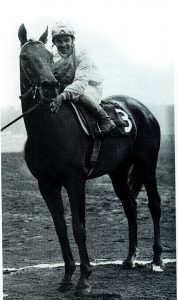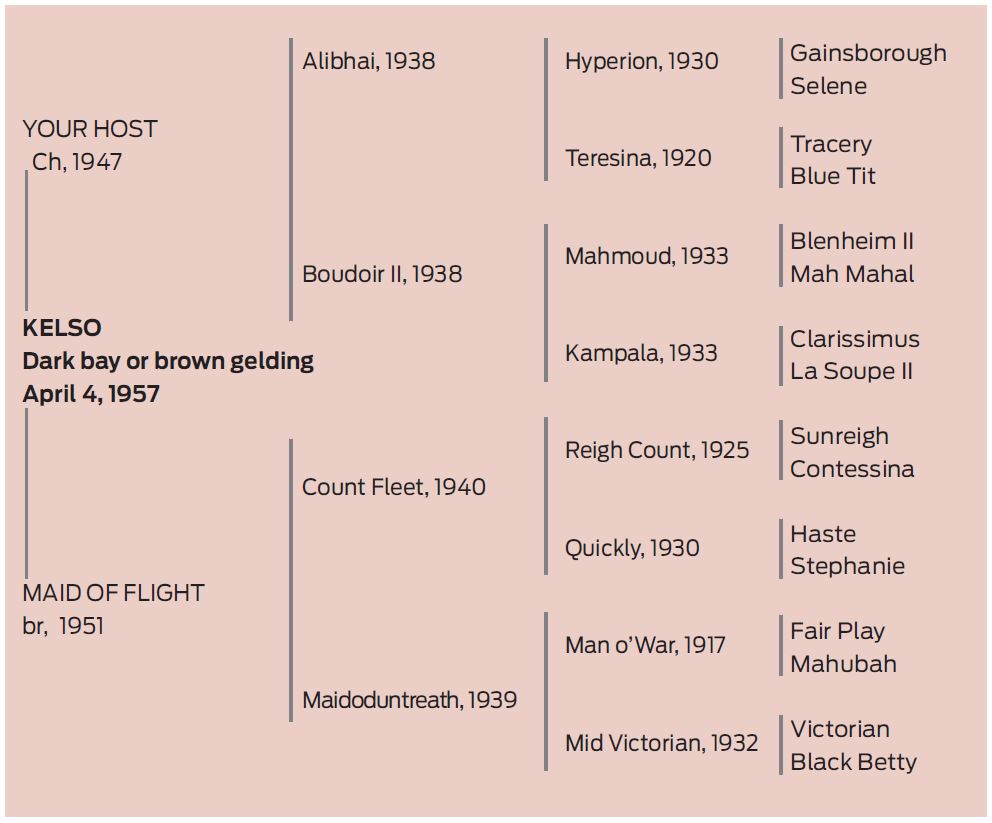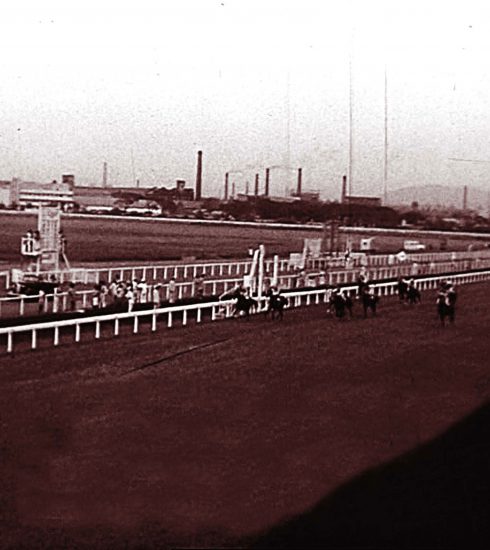KELSO

KELSO
The Thoroughbred Industry has two distinct but sometimes inseparable facets; bloodlines and running lines. Although the breeding business is all about pedigree, the racing business isn’t always. Good blood doesn’t always produce a good runner. And a good runner – even a great one – doesn’t always come from a royal family.
In 1957, at Claiborne Farm near Paris, Kentucky, the mare Maid of Flight, stakes-placed and a winner of only three of nineteen starts, produced her first foal, by Your Host, a top racehorse who didn’t have a sterling reputation as a stallion. Owned and bred by Mrs.Richard du Pont, the colt became a gelding at two before his first start on the racetrack.
It was a nondescript beginning of a career that would be anything but mundane. Kelso, one of the most beloved geldings in racing history, would go on to win thirty-nine races, smash numerous records, and earn an unprecedented number of awards. Of course, he never would be a stallion. But he nevertheless would capture the hearts and imagination of the public, perhaps even define a generation of sport.
The year was 1959. Atlantic City Race Course at that time was one of the premier tracks in the country, but surely the 13,626 patrons in attendance the afternoon of Friday, Sept. 4, had no inkling an ordinary maiden event would produce a champion many times over. On that day, Kelso, owned by Mrs. du Pont’s Bohemia Stables and trained by Dr.John Lee, won his debut under John Block.
 Kelso was 6-1 that afternoon and, when he made his second start at Atlantic City ten days later, he was dismissed at 4-1 and finished second. Lee fired him right back at the same track Sept. 23, and Kelso, this time the 9-5 favorite, again finished second. He was defeated in those two races by Dress Up and Windy Sands, respectively. Those names would become footnotes, in his story.
Kelso was 6-1 that afternoon and, when he made his second start at Atlantic City ten days later, he was dismissed at 4-1 and finished second. Lee fired him right back at the same track Sept. 23, and Kelso, this time the 9-5 favorite, again finished second. He was defeated in those two races by Dress Up and Windy Sands, respectively. Those names would become footnotes, in his story.
Kelso didn’t race again until his three-year-old season, and only after the Triple Crown races were history. He won his 1960 debut at Monmouth Park for new trainer Carl Hanford, then won a mile event at Aqueduct in 1:34 1/5, believed to be a record for a three-year old at that distance. Kelso then won the Choice Stakes. Jerome Handicap, the Discovery Handicap, the Lawrence Realization Stakes, the Hawthorne Gold Cup, and the Jockey Club Gold Cup, the latter two against older horses.
“There’s no doubt about it. He’s the best horse in America today.” Jockey Eddie Arcaro said after the Jockey Club Gold Cup at Aqueduct. “He can beat anything at any distance.”
In the Lawrence Realization, Kelso defeated Kentucky Derby favorite Tompion in 2:40 4/5 to equal the great Man o’War’s time for a mile and five-eighths. With eight wins in nine starts, he was voted three-year old champion male and Horse of the Year. And his remarkable run had just begun.
In 1961, Kelso won seven of nine starts, including the Metropolitan Handicap, which Hanford believed was the gelding’s best effort of the year. Kelso lugged 130 pounds in the mile event and, despite a troubled trip, squeezed out a neck victory. Kelso also won the Whitney Stakes (on a disqualification), the Suburban Handicap, the Brooklyn Handicap, the Woodward Stakes, and the Jockey Club Gold Cup that year.
In the Brooklyn, he carried 136 pounds, eighteen more than Divine Comedy, but still had more than a length on that foe at the wire. Kelso tried the turf for the first time in the Washington, D.C., International but fell victim to the grass-loving T. V. Lark at equal weights. It didn’t matter. After all the races had been run that year, Kelso was voted champion older horse and Horse of the Year.
At five, Kelso made twelve starts, but the defining moments came late in the season. It wasn’t a great year by Kelso standards – only six wins – but he did decimate a Jockey Club Gold Cup field by ten lengths and, in the Washington, D.C., International, he finished second, ahead of all but Match II, who shipped in from France.
But this was a love affair, and Kelso returned to New Jersey, where it all began. On Dec. 1, before a throng of 29,661 at Garden State Park, Kelso won the first running of the Governor’s Plate by five lengths in 2.30 1/5, a track record for a mile and a half, under new regular rider Ismael Valenzuela. The win pushed Kelso’s lifetime earnings to more than $ 1 million, a record at the time, and sealed his second consecutive champion older horse title and third Horse of the Year.
At six, when most top horses have either been retired or have lost their ability to compete in the upper echelon of the sport, Kelso authored an amazing season. He won nine of twelve starts, with two seconds, and banked $ 569,762, his largest single-year total.
Kelso took home the laurels in the Woodward Stakes, Whitney Stakes, Suburban Handicap, Seminole Handicap, Nassau County Handicap, John B. Campbell Handicap, Gulfstream Park Handicap, and the Aqueduct Stakes. He also won the Jockey Club Gold Cup, the grueling two-mile test, for the fourth year in a row.
One of Kelso’s front ankles reportedly swelled only two days before the Oct. 19, 1963 Gold Cup, but he cruised home at Aqueduct before 50,131 fans, many of whom were there to see him, and him alone. “He gets better all the time,” jockey Valenzuela said after the race. “He was galloping today. He could have beaten his own track record if we’d tried.”
Later that year, Kelso returned to Laurel for the D.C., International, and again hooked a turf buzz saw in Mongo.
 He finished second again on the grass, but first in the hearts and minds of the public. He was voted champion older horse and Horse of the Year.
He finished second again on the grass, but first in the hearts and minds of the public. He was voted champion older horse and Horse of the Year.
In 1964, Kelso won five of eleven starts, some of which featured battles with Gun Bow. At seven, Kelso understandably was expected to show the wear and tear of age. For good measure, he won his fifth Jockey Club Gold Cup, and in the process set the American standard of 3.19 1/5 for two miles. And, though not a turf tiger, Kelso shipped to Laurel and won the D.C., International in a world record 2:23 4/5 for one and a half miles on the grass.
He came away with his fourth consecutive title as champion older horse, and fifth consecutive Horse of the Year award. No horse has come close since.
The twilight of Kelso’s career came later than most, but it had to come. He won three of six starts, including the Stymie Handicap and Whitney Stakes, in 1965, at the age of eight. He made one start at nine, at Hialeah Park to prep for the Donn Handicap at Gulfstream Park, but during a workout suffered a hairline fracture of the inside sesamoid of his right front foot.
Hanford, soon after the retirement of the great one was announced, was asked how he felt. “Well, not as good as Ifelt last week, but you have to come to the end of the line sometime.” Kelso fell $ 22,104 short of the $ 2-million mark in earnings, but to mention what he failed to accomplish really isn’t fair. Here was a gelding who had won five Horse of the Year titles, was a divisional champion five times, set or equaled eight track records, and set three American standards. He met and often got the best of the best Thoroughbreds racing had to offer, on dirt and turf, under serious weight disadvantages. Kelso died on Oct. 16, 1983, at Mrs. du Pont’s Woodstock Farm in Maryland.
Perhaps the last few lines in a retirement tribute that appeared in The Blood Horse of March 19, 1966, said it best: “Kelso demonstrated the durability of class. No horse in our time was so good, so long. His was mature greatness.”

Extract from “Thoroughbred Champions: Top 100 Racehorses of the 20th Century” Published by Eclipse Press A Division of Blood-Horse Publications.
To order, go online: www.ExclusivelyEquine.com
December -January 2012











